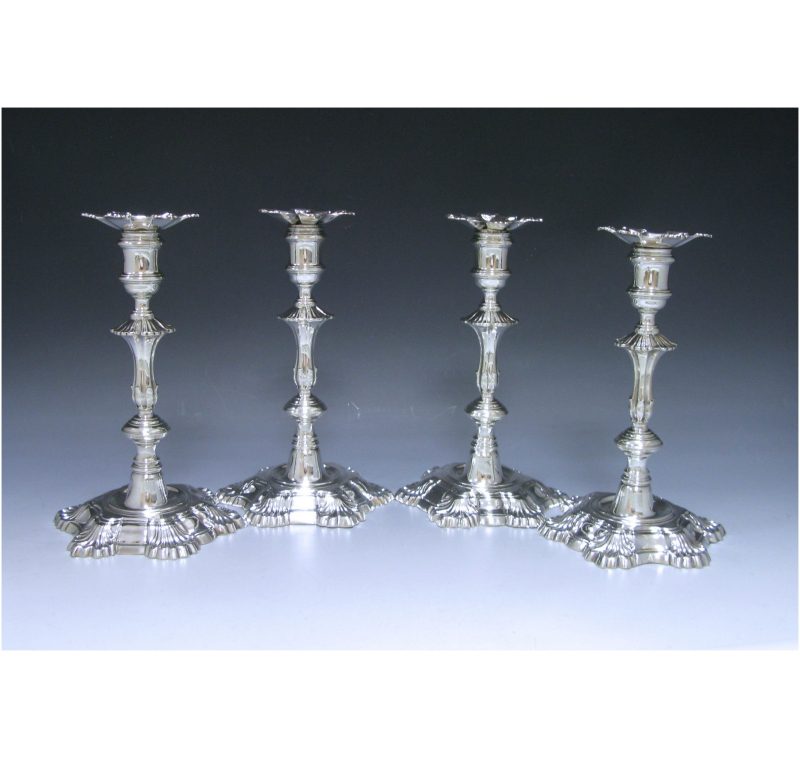
William Gould
William Gould, son of James Gould of Kingsbury in the County of Somerset gentleman, apprenticed to his brother James Gould on payment of £10, 9 January 1724. Free, 5 April 1733.
First mark entered as largeworker, 20 October 1732. Address: "Wheat Sheff in Gutter Lane". Second mark, 24 July 1734. Address: "at ye Candlestick in Foster Lane". Third mark, 15 June 1739. Livery, September 1746. Fourth mark, 1 June 1748. Fifth, 24 September 1753. Address: Old Street. Moved back to Foster Lane, 14 May 1756. Heal, however, records him at Old Street to 1757.
Like his brother's, his mark is found on virtually candlesticks alone, but his greatest work bears the mark of William Alexander. This is the great Knesworth chandelier of the Fishmongers' Company of 1752. The Renter Warden's account book for 1752 - 54 shows a repayment of £484. 1s. 3d. from Joseph Dyer and William Alexander for frauds discovered to be made by "William Gould the workman". Since Alexander's work is otherwise virtually unknown, it seems certain that he acted as sponsor for the piece and that on the evidence of the above statement, Gould was the actual craftsman responsible for one of the greatest pieces of rococo silver surviving.
Gould's misdemeanour was not forgotten by his own company when he applied, in December 1763, for the post of Junior Weigher in the Assay Office. The minutes record: "it was observed that the said Will Gould had some years ago been guilty of fraud in concealing a great number of copper in a silver chandelier made for the Fishmongers Company & that the same was a fact well known to many of the gentlemen of the Court and therefore it was moved & seconded that the said Wm Gould's petition be rejected.....". A few days later, Gould petitioned for the return of his Livery fine of £20 on the grounds ''that thro' divers losses and misfortunes he is now straitened in his circumstances and in great want of some charitable assistance''. His petition was granted on his executing a release of all privileges as a Livery and he fades from sight.







